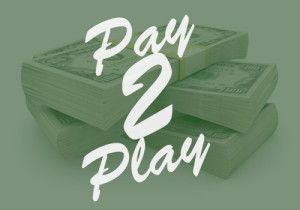Pay to Play
by Kassadee Marie, HSM team writer
First, in case it’s not clear to anyone, let me say this: PlayStation Home is a free service that’s not actually free to play.
How is it that I can say that when it’s touted as a free service? Well, basically because although it’s offered for free itself, you can’t be there without power: an internet service, a television and a PS3 (at this time). So, you or someone paid and continues to pay for everyone to play there – but this isn’t a bad thing. Many items are included in these basic costs, such as the Harbour Studio personal space and furniture, default clothing for both genders, and, of course, your malleable personal avatar, who comes with basic emotes, dances, and expressions. In addition there are public places to explore, games to play, free items to collect, and many rewards to be earned without any further costs. There are people who don’t spend any additional money on Home and enjoy the experience very much. Then there are those, like most of us, who pay where their interests lie, such as fashion or decorating.
And then there are the gamers.
Gamers can play a lot of games on Home for free, such as those in the public spaces like the bowling alley, or spaces made especially for a game, such as nDreams’ F.U.B.A.R. There are also those owned by friends, either those built into estates or clubs or those purchased separately and added to them. Sometimes there are even rewards for playing – of various types and perceived value. Two of my favorite rewards are a white couch and chair that are earned playing and winning the Vendetta game at the Abstergo Labs space. The furniture items from the Haven of the Skies club are very nice, too. Still, Sony and the developers are in business and obviously need to make money to stay in business, so there are costs to the players associated with a lot of the games on Home. Those who think it should be otherwise are dreaming of utopia. Other than the purchase of a personal space which has a game built-in or the purchase of a gaming item such as a dart board, pool or card table, or a gaming cabinet, there are a lot different ways to be charged before or during play. But all items fall into two categories: consumables and permanent items. Some games have both, of course.
 Consumables are items such as the newer Orb Runner temporary boosters, such as the Time Vortex or Double Vision items; Sodium2 rocket boosters; Cutthroats upgrades, such as fire, chicken, etc. cannon balls; and Mercia items, such as health potions. As indicated by the name, this type of item can be spent or used up in gameplay and must be purchased again to see the effects or upgrades they offer. They usually cost less for an initial purchase, but may not be a bargain in the long run, if they have to be re-purchased many times. If you want to try out a game to see if you like it before spending too much on it, or if you’re looking for a little boost once in awhile while playing, they’re perfect, though.
Consumables are items such as the newer Orb Runner temporary boosters, such as the Time Vortex or Double Vision items; Sodium2 rocket boosters; Cutthroats upgrades, such as fire, chicken, etc. cannon balls; and Mercia items, such as health potions. As indicated by the name, this type of item can be spent or used up in gameplay and must be purchased again to see the effects or upgrades they offer. They usually cost less for an initial purchase, but may not be a bargain in the long run, if they have to be re-purchased many times. If you want to try out a game to see if you like it before spending too much on it, or if you’re looking for a little boost once in awhile while playing, they’re perfect, though.
Permanent upgrades are such items the energy goggles, cannon coolant, hoodies, etc. at Aurora; tech goggles, various armor and clothing items, and weapons at Novus Prime; companions and furniture for MiniBots: Battlebox, and Cutthroats clothing such as the commanders hat which prevents mutinies. Mercia clothing and weapons are, of course, yours to keep using during game play and some items (such as clothing) can even be used outside of the game.
Each developer seems to want to have their own proprietary currencies associated with their game or games, instead of direct cash purchases. So you will find coinage such as Mass Media’s Midway tickets, Lockwood’s Uproar credits, Sony’s Cutthroats gold, O-Two’s Peakvox Labs tickets, nDreams’ F.U.B.A.R. War Bucks or Espionage 9 or Los Penguini Brothers tickets, Granzella’s GZ tickets, VEEMEE’s Acorn Meadows Park “acorns”; Hellfire’s Home Tycoon gold coins, Juggernaut coins, Game Mechanics coins, and Digital Leisure’s casino chips. These can be used to play the games themselves sometimes or to purchase both types of in-game boosters.
In my opinion, mistakes have been made in Home with regard to gaming, several of them very serious, such as Mercia and the original Cutthroats. Sony revised Cutthroats, but it may have been too late. Lockwood appears to have abandoned a broken Mercia. Why did this happen? They both let people play all levels for free and they gave away all of the rewards – which were excellent – before anyone had to pay a cent. They simply didn’t make a profit; Lockwood probably didn’t break even. I believe that most Home games should offer a free trial of any game, but a limit to how much you can play before you pay. There should be a taste of the game for free, but no rewards until you are paying. This is the same as a downloadable internet game demo that offers only one or two levels and no trophies at all. Of course, there should be a balance between what you are asked to pay and the fun of playing the game and the rewards earned. It may be hard to strike this balance, but no developer will please everyone; that’s a given.
Of course, whether you buy consumables or permanent upgrades for the games you play and how much you spend to do so, is entirely up to you. I do suggest you try before you buy, or at least limit your purchases until you try a game out. Learn all the possible expenses to a Home game, the way you learn all the rules. When you know you like the game or really want the associated rewards, then is the time to support the developers with your wallet.
Share
| Tweet |



Home has this three-pronged problem when it comes to games.
As a social MMO first and foremost, Home hasn’t earned a reputation (until recently) as a gaming outlet from its audience. It’s sort of like Facebook in that games have the issue of supporting the social angle -- Home hasn’t been about the games themselves, unlike MMORPGs. It thus has comparisons more to Second Life at best; MMOs on consoles tend to be the likes of DCUO, Free Realms, and Final Fantasy XIV. As such, console gamers have slim pickings when it comes to drawing comparison and almost inevitably we wind up comparing it to games -- and saying ‘Home is no game.’
This is on top of the fact that Home’s infrastructure wasn’t designed from the ground-up to be a gaming platform. Sure, it is a gaming platform, but again, similar to how Facebook is -- neither were intended be about the games, so the programming and engine limit what’s permissible. When game developers must design games around the social aspects (as opposed to the other way around) and the limitations of a digital realm’s architecture, one cannot approach it the same way one would approach making a game for the PS3 itself.
And this still hasn’t touched on what was said here -- have they given away too much for free? It has certainly been a mistake for multiple games on Home, whether we discuss Mercia or Cutthroats. Sony shot itself in the foot with some pricing strategies and third-party developers oddly followed suit in certain ways. When you offer the experience largely for free, without any major incentive to purchase upgrades (let alone anything else), profits become a bit like fairy tales. At its worst, you heard of ‘profit’ but only the crazy dude in the tin-foil hat swears it’s real.
I agree with you Kass. I played through Mercia three times and never paid a cent. All of the games we have like this should be structured to play free and perhaps give one or two decent rewards for free as incentive to continue and pay for the rest. The other side product of doing what they have in the past is that when people get everything for nothing they develop an attitude toward the rest of the games that everything should always be free and complain. This totally free gaming environment is self defeating.
The reason why most home games fail is because they are poor or broken or worse both. Games on home should be simple and easy to play, bit like the facebook does it. Facebook knows that it cant compete with the games outside of its platform so it doesnt. Its also clever in the way unless you pay to play you are restricted to how much you can play on one day. Worse than that though is when developers dont back up they work and repair it. There was an incident when one developer was tweeting sorry they are working on resolving issues on they game, when at a meet and greet a week earlier the same person said we have no one working on that game and there will be no updates due to its poor uptake. Another incident of a game being released after all the beta testers said its has issues and none of them were fixed before its released. If its broken and a developer isnt going to fix it fully they should be forced to refund any money spent on it and remove it from home. Granzella removed several spaces from home in Japan for months to get them working better. Any broken or neglected game is a blight on homes already poor reputation for being poorly maintained.
I first logged on home right after the “blac out/shutdown” If you remember the stores we’re not available for about a month.
If it was’nt for Hellfire’s Novus-Prime freemium model I would never had stayed for more than a few days.
I was able to level up, up to then top rank of Captain. Play with the “big guys”. Of course my ship was slow as hell and other perks were/are available to “spender”. But I was THERE!
The different boards (day/week/month/all time) as well as the friendship build gave me a “purpose” to keep playing.
Among all problems listed with Mercia I think the lack (or absence) of “replay value” is the most under-estimated. I could say the same for many other games. Give me a reason to stay and eventually, the $5.00 perk wich seemed pointless first sudenly look interresting.